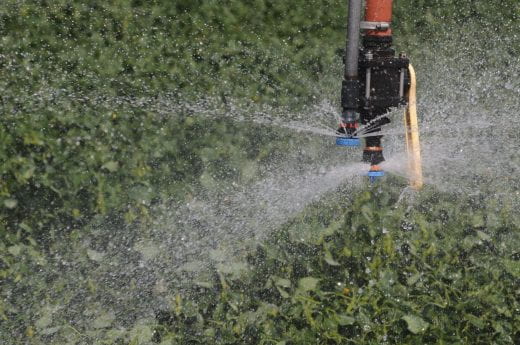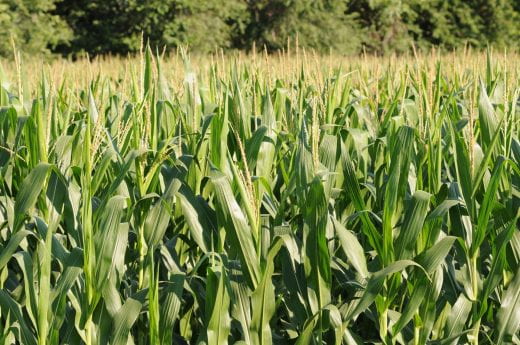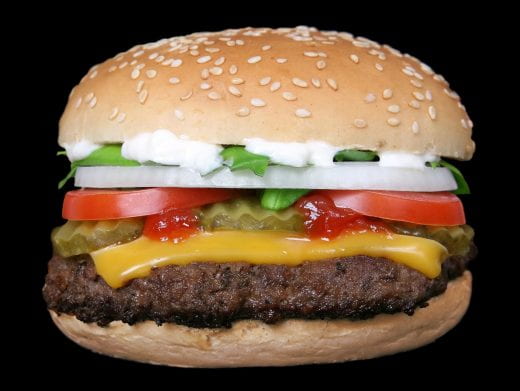Better Kansas – Nov. 21, 2019
Welcome to Better Kansas, where every Thursday we shed light on events, resources and other information designed to make your life, businesses, communities and state better. This is a small glimpse of what K-State Research and Extension across the state has to offer. Share on social media and subscribe! My next post will be Thursday, Dec. 5. In the meantime, I’ll be planning upcoming posts and celebrating turkey day. Happy Thanksgiving! – Mary Lou Peter mlpeter@ksu.edu
Better Living, Better Communities
 THE HOLIDAYS ARE COMING, AND THAT MEANS THOSE KIDDOS ARE GOING TO BE HOME with a lot of unstructured time on their hands. You know what that means. Children will often gravitate toward screen time on their phone, tablet or television. Figuring out ways to limit that time can be challenging – there are only so many trips you can make to the park or zoo or board games you can play, but studies show that excessive media consumption can lead to attention difficulties, school problems, sleeping and eating disorders and depression. How many of us adults think we’re going to check social media for a couple of minutes and an hour later … you know what I’m saying! For more information, including American Academy of Pediatrics recommendations, take a look at The New Screen Time: Beyond Television and into the Future.
THE HOLIDAYS ARE COMING, AND THAT MEANS THOSE KIDDOS ARE GOING TO BE HOME with a lot of unstructured time on their hands. You know what that means. Children will often gravitate toward screen time on their phone, tablet or television. Figuring out ways to limit that time can be challenging – there are only so many trips you can make to the park or zoo or board games you can play, but studies show that excessive media consumption can lead to attention difficulties, school problems, sleeping and eating disorders and depression. How many of us adults think we’re going to check social media for a couple of minutes and an hour later … you know what I’m saying! For more information, including American Academy of Pediatrics recommendations, take a look at The New Screen Time: Beyond Television and into the Future.
 NO PLACE LIKE HOME: In many cases, aging in one’s own home makes sense, but sometimes a few modifications are helpful. Home features that once were navigated as part of everyday life – stairs, bathtubs and kitchens – can sometimes be altered to make them safer and easier to use while supporting independence. Changing out door knobs to more easily opened lever-type handles or adding better lighting may seem costly, but that cost will be minimal compared with a hospital stay or a move to a nursing home. Check out the four-page Simple Home Modification for Aging in Place factsheet for more tips. I’m reminded of when my 80-plus-year-old dad was visiting and a friend suggested I remove items from the stairs to decrease the chance of him (or ANY of us!) tripping. My friend was so right! Sometimes we adult children don’t recognize the hazards right in plain view.
NO PLACE LIKE HOME: In many cases, aging in one’s own home makes sense, but sometimes a few modifications are helpful. Home features that once were navigated as part of everyday life – stairs, bathtubs and kitchens – can sometimes be altered to make them safer and easier to use while supporting independence. Changing out door knobs to more easily opened lever-type handles or adding better lighting may seem costly, but that cost will be minimal compared with a hospital stay or a move to a nursing home. Check out the four-page Simple Home Modification for Aging in Place factsheet for more tips. I’m reminded of when my 80-plus-year-old dad was visiting and a friend suggested I remove items from the stairs to decrease the chance of him (or ANY of us!) tripping. My friend was so right! Sometimes we adult children don’t recognize the hazards right in plain view.
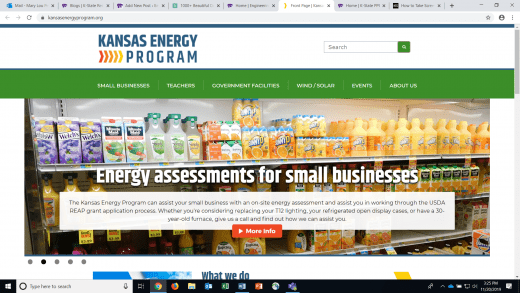 WE KNOW ABOUT AGRICULTURAL RESEARCH AND EXTENSION PROGRAMS at universities like K-State and their important role in helping feed the nation and the world (if you have questions about that, send me an email and I’ll connect you with the right people :), but a lesser-known aspect of extension is engineering extension. These folks assist and provide education to home and business owners, plus government agencies on topics such as energy efficiency, pollution prevention, radon prevention and mitigation, and more – even grant writing. Watch for more posts about these topics in upcoming weeks.
WE KNOW ABOUT AGRICULTURAL RESEARCH AND EXTENSION PROGRAMS at universities like K-State and their important role in helping feed the nation and the world (if you have questions about that, send me an email and I’ll connect you with the right people :), but a lesser-known aspect of extension is engineering extension. These folks assist and provide education to home and business owners, plus government agencies on topics such as energy efficiency, pollution prevention, radon prevention and mitigation, and more – even grant writing. Watch for more posts about these topics in upcoming weeks.
Better Farming, Ranching and Gardening
 LOW COMMODITY PRICES AND HIGH INPUT COSTS, plus this year’s challenging weather and trade disputes make farm financial management more important than ever. Kansas women involved in farming of any kind, whether it’s growing sweet potatoes or soybeans, have an opportunity to sharpen their skills by signing up for Farm Financial Skills for Kansas Women in Agriculture. The program series, planned for four consecutive Wednesday evenings from mid-January to early February, are offered in 31 communities across the state. Each evening begins with a meal, followed by training on specific topics, including recordkeeping, balance sheets, income statements, farm family expense management, cash flow and more. Don’t miss out on this first-of-a-kind Kansas program. In doing a little background reading, I learned that Wamego, Kansas, was once the sweet potato capital of the United States. Interesting!
LOW COMMODITY PRICES AND HIGH INPUT COSTS, plus this year’s challenging weather and trade disputes make farm financial management more important than ever. Kansas women involved in farming of any kind, whether it’s growing sweet potatoes or soybeans, have an opportunity to sharpen their skills by signing up for Farm Financial Skills for Kansas Women in Agriculture. The program series, planned for four consecutive Wednesday evenings from mid-January to early February, are offered in 31 communities across the state. Each evening begins with a meal, followed by training on specific topics, including recordkeeping, balance sheets, income statements, farm family expense management, cash flow and more. Don’t miss out on this first-of-a-kind Kansas program. In doing a little background reading, I learned that Wamego, Kansas, was once the sweet potato capital of the United States. Interesting!
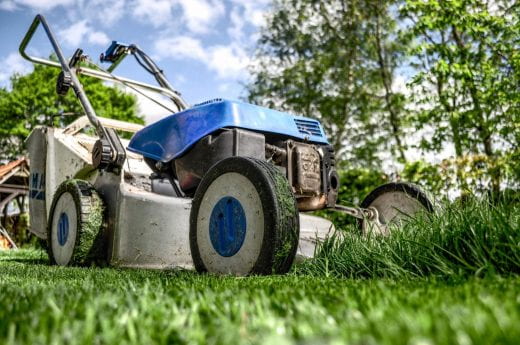 OK, MAYBE IT’S JUST ME, BUT SOME OF US HAVE A TENDENCY TO PUT THAT HARDWORKING LAWNMOWER AWAY right after the last fall mowing. You know who you are :). A little maintenance now will improve your day come spring when you’re ready to fire it up because dang, that grass is growing again! Apparently, gas left in the mower for months becomes thick and gummy and what about those blades that were getting dull toward the end of the season? Take a look at the horticulture newsletter for more on this plus other topics.
OK, MAYBE IT’S JUST ME, BUT SOME OF US HAVE A TENDENCY TO PUT THAT HARDWORKING LAWNMOWER AWAY right after the last fall mowing. You know who you are :). A little maintenance now will improve your day come spring when you’re ready to fire it up because dang, that grass is growing again! Apparently, gas left in the mower for months becomes thick and gummy and what about those blades that were getting dull toward the end of the season? Take a look at the horticulture newsletter for more on this plus other topics.
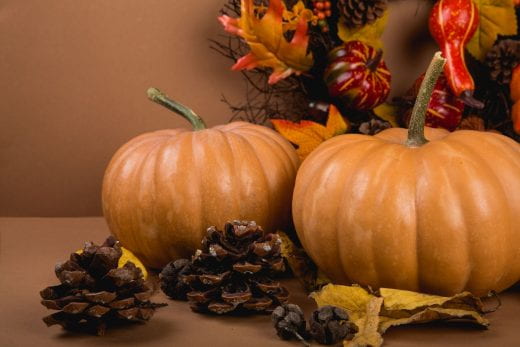 ARE THOSE PUMPKINS ON YOUR PORCH OR AT THE FARM GATE GETTING BEYOND RIPE? Mine certainly are. It turns out, you can feed them to poultry or livestock as a tasty treat and a good source of vitamins A and E. Just make sure they’ve not been painted or treated with anything toxic. Take a look at Recyling Pumpkins for more tips. One of my pumpkins disappeared from the porch a few days ago. I thought momentarily it might have been stolen and it turned out it was! By a hungry raccoon looking for a snack, I suspect. I found it under a bush by the porch.
ARE THOSE PUMPKINS ON YOUR PORCH OR AT THE FARM GATE GETTING BEYOND RIPE? Mine certainly are. It turns out, you can feed them to poultry or livestock as a tasty treat and a good source of vitamins A and E. Just make sure they’ve not been painted or treated with anything toxic. Take a look at Recyling Pumpkins for more tips. One of my pumpkins disappeared from the porch a few days ago. I thought momentarily it might have been stolen and it turned out it was! By a hungry raccoon looking for a snack, I suspect. I found it under a bush by the porch.
_
For more resources and activities, contact the K-State Research and Extension office in your area. Check out our other blogs and subscribe to our weekly emails here: https://www.ksre.k-state.edu/news/blogs/




